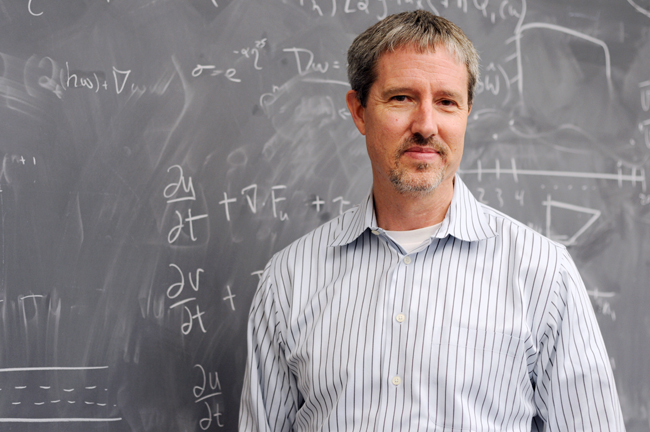Before the next hurricane strikes Texas, a research group at UT would have already collected data on the hurricane, run simulations of its impact and handed its forecast over to the state to plan evacuations and direct emergency response teams – all within 90 minutes of a wind advisory. This research group is the Computational Hydraulics Group, headed by UT aerospace engineering professor Clint Dawson.
“My group focuses on computational methods of physical processes in the coastal ocean and coastal floodplains,” Dawson said. “Basically, we develop very large-scale computer simulations and run them, usually at the Texas Advanced Computing Center.”
Dawson said his group runs simulations on processes such as hurricane storm surges, waves, oil spills and flooding due to rainfall.
“The goal is to develop fundamental computational science so that we can improve our understanding and predictive capability of how the ocean interacts with the coast,” Dawson said. “It is amazing how well computer models can predict storm surge, given how complicated the problem is.”
Casey Dietrich is one of 14 researchers besides Dawson who works in the research group. He said having access to Stampede, UT’s new and powerful supercomputer, is important for the simulations the group runs.
“We’re very lucky we get access to one of the largest supercomputers in the world,” Dietrich said. “That opens the door for us to run larger, more interesting problems.”
Dietrich said the models they run use calculations from Stampede that allow them to analyze changes in an area as small as 20 meters.
“We can really see how the flooding is affecting the environment,” Dietrich said.
Talea Mayo, a researcher in the group and a graduate student at UT, said she joined the group because she loved the real world applications of Dawson’s work.
“Working in the CHG has been wonderful,” Mayo said. “Everyone’s research is interesting; there is always something to be learned.”
Hurricane season begins June 1, and with nearly 60 percent of Texans living within 50 miles of the coast, hurricane season provides the group with a vital opportunity to apply what they learn. Mayo said mathematics is the key to the research done by the group.
“Most people don’t understand the applicability of mathematics,” Mayo said. “Our work is important and it can potentially save lives, and we couldn’t do it without mathematics.”
Printed on Thursday, April 4, 2013 as: UT research gears up for hurricane season





















